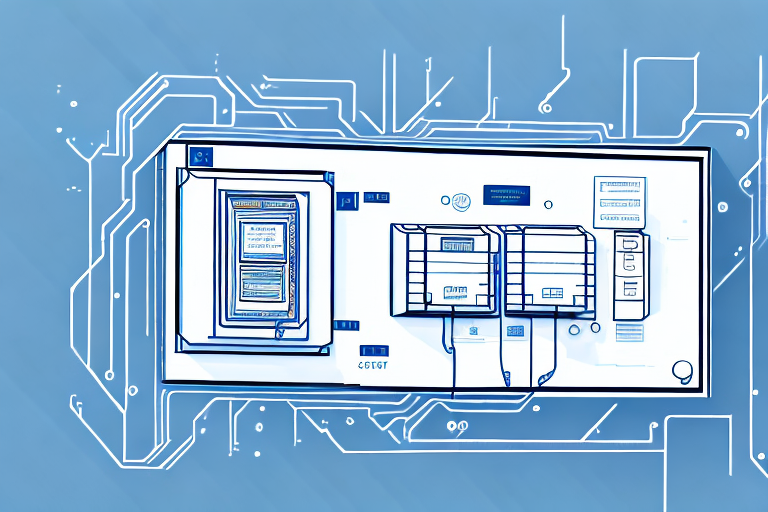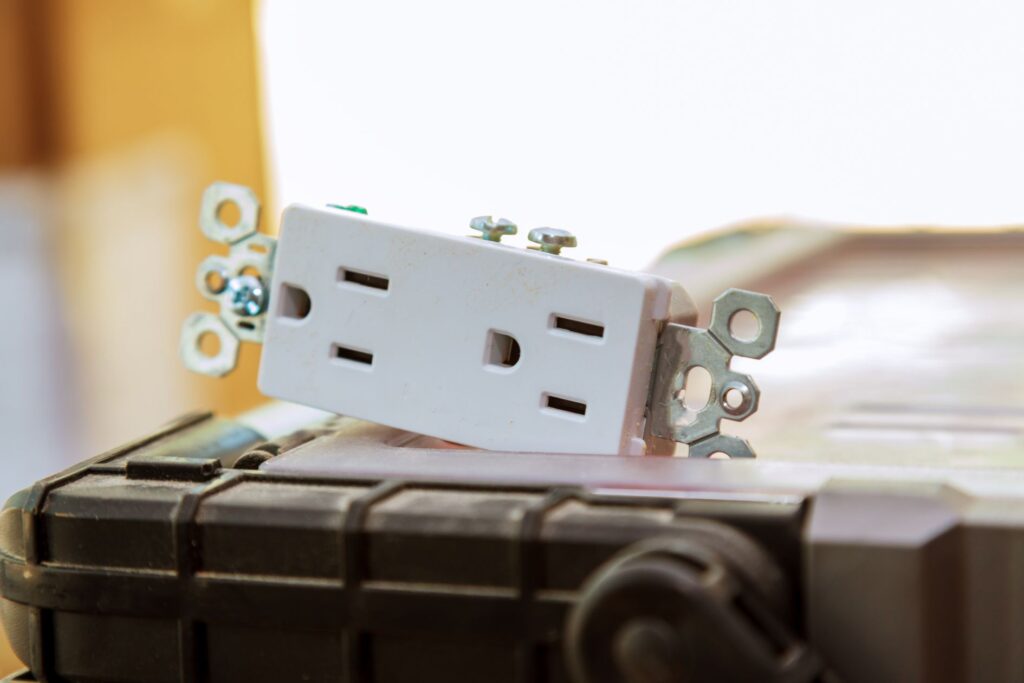Circuit breakers are essential components of any electrical system, but the technology behind them has come a long way. Understanding the advancements in circuit breaker technology can help you make informed decisions about your electrical systems, ensuring safety, efficiency, and functionality.
Understanding Circuit Breaker Technology
Before diving into the latest innovations, let’s start with the basics. Circuit breakers are designed to protect electrical circuits from overloads and short circuits, preventing potential fire hazards and equipment damage. They accomplish this by interrupting the electrical flow when a fault is detected.
Traditionally, electric circuit breaker have relied on a thermal-magnetic trip mechanism. This mechanism combines a bimetal strip, which bends when exposed to excessive current, with a magnetic trip unit that reacts to short circuits. While effective, this technology has limitations in terms of responsiveness and adaptability.
However, the basic functioning of circuit breakers involves more than just the thermal-magnetic trip mechanism. Circuit breakers consist of several key components that work together to ensure the safety of electrical systems:
- Contacts: These are the conductive parts that make or break the electrical connection. They are designed to handle high currents without overheating or welding together.
- Operating Mechanism: This mechanism controls the opening and closing of the contacts. It can be manual or automatic, depending on the type of circuit breaker.
- Tripping Mechanism: The tripping mechanism determines when the contacts should open due to abnormal conditions. It monitors the current flowing through the circuit and triggers the opening of the contacts if necessary.
When the current exceeds the breaker’s rated capacity, the contacts are forced open by the operating mechanism, breaking the circuit. This interruption stops the flow of current and prevents further damage.
Despite the effectiveness of traditional circuit breaker technology, there has been a need for more advanced solutions to meet the evolving demands of modern electrical systems. As a result, circuit breaker technology has undergone significant evolution in recent years.

Evolution of Circuit Breaker Technology
In recent years, circuit breaker technology has rapidly advanced, driven by the demand for enhanced safety and energy management. Manufacturers are constantly pushing the boundaries to develop more efficient and intelligent solutions. Click here to read about Navigating The Competitive Real Estate Market With Buyers Agent Sydney.
One major development in circuit breaker technology is the introduction of electronic trip units. These units utilize microprocessors to monitor and analyze electrical parameters, allowing for more precise and customizable protection settings. Electronic trip units also offer advanced communication capabilities, enabling remote monitoring and control of circuit breakers.
Another area of innovation is the use of solid-state technology in circuit breakers. Solid-state circuit breakers replace traditional mechanical components with electronic switches, resulting in faster response times and improved reliability. These circuit breakers can be integrated with smart grid systems, enabling better energy management and grid stability.
Furthermore, advancements in materials and design have led to the development of compact and lightweight circuit breakers. These breakers offer higher breaking capacities in smaller form factors, making them ideal for space-constrained applications.
In conclusion, circuit breaker technology has come a long way from its traditional thermal-magnetic trip mechanism. With the introduction of electronic trip units, solid-state technology, and innovative designs, circuit breakers have become more efficient, intelligent, and adaptable. As electrical systems continue to evolve, circuit breaker technology will undoubtedly play a crucial role in ensuring the safety and reliability of our power infrastructure.
Recent Innovations in Circuit Breaker Technology
Two notable innovations in the field of circuit breakers are smart circuit breakers and energy management circuit breakers.
The world of electrical systems is constantly evolving, and circuit breakers play a crucial role in ensuring the safety and efficiency of these systems. In recent years, advancements in technology have led to the development of smart circuit breakers and energy management circuit breakers, revolutionizing the way we protect and manage electrical networks.
Smart Circuit Breakers
Smart circuit breakers integrate advanced sensing, monitoring, and communication capabilities into traditional breaker designs. By leveraging modern technologies, such as microprocessors and wireless connectivity, these intelligent breakers provide valuable insights into the electrical system’s health and performance.
Imagine a circuit breaker that not only protects against overloads and short circuits but also actively monitors the electrical network for any signs of trouble. Smart circuit breakers do just that. With built-in sensors, they can detect abnormal conditions such as overheating or excessive current. This early detection allows them to automatically shut down affected circuits, preventing catastrophic failures and minimizing downtime.
But the benefits of smart circuit breakers don’t stop there. These breakers can communicate with a central monitoring system, enabling remote monitoring and control. This means that electrical engineers and facility managers can keep a close eye on the health and performance of the electrical system from anywhere in the world. They can receive real-time alerts and notifications, allowing them to take immediate action if any issues arise.
Additionally, smart circuit breakers provide valuable data on energy consumption, helping users identify energy-intensive equipment or areas. This data can be used to optimize power distribution, balance loads, and improve overall energy efficiency. By leveraging the power of technology, smart circuit breakers are transforming the way we manage electrical systems, making them safer, more reliable, and more efficient.
Energy Management Circuit Breakers
Energy management circuit breakers go beyond traditional circuit protection, offering additional functionalities to improve energy efficiency. These breakers monitor and analyze energy consumption in real time, allowing users to identify energy-intensive equipment or areas.
In today’s world, energy efficiency is a top priority. With rising energy costs and growing environmental concerns, finding ways to reduce energy consumption has become essential. Energy management circuit breakers are designed to address this challenge.
By continuously monitoring energy consumption, these circuit breakers provide users with valuable insights into their electrical systems. They can identify energy-intensive equipment or areas that may be contributing to high energy bills. Armed with this information, users can make informed decisions about energy usage and take steps to optimize their systems.
Energy management circuit breakers also offer the ability to prioritize energy usage. For example, in a commercial building, during peak demand periods, the circuit breakers can automatically adjust the power distribution to ensure critical systems receive the necessary energy while non-essential equipment is temporarily powered down. This not only helps reduce utility costs but also contributes to a more sustainable and environmentally friendly operation.
In conclusion, the advancements in circuit breaker technology have brought us smart circuit breakers and energy management circuit breakers. These innovations have transformed the way we protect and manage electrical systems, making them safer, more efficient, and more sustainable. As technology continues to evolve, we can expect further advancements in circuit breaker technology, paving the way for a future where electrical systems are smarter and more resilient than ever before.
Benefits of New Circuit Breaker Technologies
Enhanced Safety Features
The advancements in circuit breaker technology have significantly improved safety measures. Smart circuit breakers offer advanced features like ground fault detection and arc fault circuit interruption, which can identify and mitigate potential fire hazards. These intelligent devices can also provide real-time notifications and alerts, enabling prompt action in case of emergencies.
Furthermore, the enhanced safety features of new circuit breaker technologies extend beyond fire prevention. These devices are equipped with advanced sensors and algorithms that can detect abnormal electrical behavior, such as power surges or fluctuations. By promptly detecting and responding to such anomalies, circuit breakers can protect electrical appliances and prevent damage to sensitive electronic equipment.
In addition, new circuit breaker technologies also prioritize user safety. They are designed with features like tamper-proof enclosures and child-resistant mechanisms to prevent unauthorized access and accidental injuries. These safety enhancements ensure that circuit breakers not only protect against electrical hazards but also provide a secure environment for users.
Energy Efficiency Improvements
Energy management circuit breakers provide valuable insights into energy consumption patterns, helping users identify inefficiencies and wastage. With this knowledge, adjustments can be made to optimize energy usage and reduce overall energy consumption. This not only lowers energy bills but also contributes to a greener and more sustainable environment.
Moreover, new circuit breaker technologies offer innovative energy-saving features. Some circuit breakers are equipped with built-in power monitoring capabilities, allowing users to track and analyze their energy usage in real time. This data can then be used to identify energy-intensive appliances or areas, enabling users to make informed decisions about energy conservation measures.
Additionally, advanced circuit breakers can integrate with smart home systems, enabling automated energy management. These devices can communicate with other smart devices, such as thermostats or lighting controls, to optimize energy usage based on occupancy patterns or time of day. By intelligently managing energy consumption, circuit breakers contribute to a more efficient and sustainable energy ecosystem.
Future Trends in Circuit Breaker Technology
The future of circuit breaker technology looks promising, with ongoing research and development paving the way for exciting advancements.
One of the key trends in circuit breaker technology is the integration of predictive maintenance capabilities. Traditionally, circuit breakers have been reactive, only responding to failures after they occur. However, with the advent of advanced sensors and data analytics, circuit breakers can now proactively monitor their own health and predict potential issues. By analyzing data such as temperature, current, and mechanical wear, these breakers can schedule maintenance or replacement before a failure occurs. This predictive approach minimizes downtime and improves system reliability, ensuring that electrical systems operate smoothly and efficiently.
In addition to predictive maintenance, circuit breakers are also embracing the Internet of Things (IoT) revolution. As the IoT continues to expand, circuit breakers are joining the connected ecosystem, enabling centralized control, remote monitoring, and data analysis. By integrating circuit breakers with IoT devices, electrical systems can be managed more efficiently. For example, facility managers can remotely monitor the health and performance of circuit breakers, allowing them to quickly identify and address any issues. Troubleshooting becomes simpler and more streamlined, as data from circuit breakers can be analyzed in real-time to identify patterns or anomalies. This integration with IoT devices enhances overall system performance and ensures that electrical systems operate at their optimal levels.
Furthermore, the integration of circuit breakers with IoT devices opens up new possibilities for energy management. By collecting and analyzing data from circuit breakers, energy consumption patterns can be identified and optimized. This allows for more efficient energy usage, leading to cost savings and reduced environmental impact. With the increasing focus on sustainability and energy efficiency, this integration of circuit breakers with IoT devices is a significant step towards creating smarter and greener electrical systems.
Overall, the future of circuit breaker technology is filled with exciting possibilities. The integration of predictive maintenance capabilities and IoT devices is revolutionizing the way electrical systems are managed and maintained. With these advancements, circuit breakers are becoming smarter, more reliable, and more efficient, ensuring that our electrical infrastructure is prepared for the challenges of the future.
Choosing the Right Circuit Breaker Technology
Factors to Consider
When selecting circuit breaker technology, several factors should be taken into account:
- System Requirements: Understand the specific needs of your electrical system and choose a breaker that can handle the expected load and voltages.
- Safety Considerations: Evaluate the safety features provided by different circuit breaker technologies and ensure they align with your requirements.
- Energy Efficiency: If energy management is a priority, opt for energy management circuit breakers that can help optimize energy consumption.
Understanding Your Specific Needs
No two electrical systems are the same, so it’s crucial to assess your specific needs and consult with experts in the field. They can guide you in selecting the circuit breaker technology that best suits your requirements, ensuring optimal performance and safety.
As innovations in circuit breaker technology continue to progress, electrical systems will become more intelligent, efficient, and reliable. By staying informed about these advancements, you can make informed choices that benefit your electrical infrastructure and contribute to a safer and more sustainable future.
